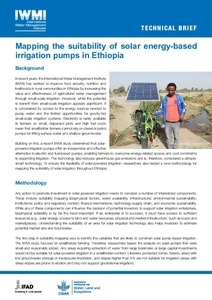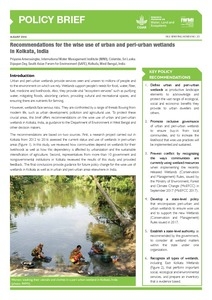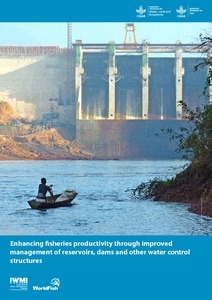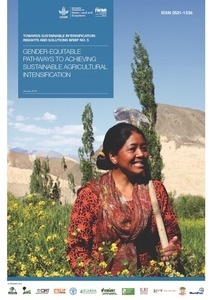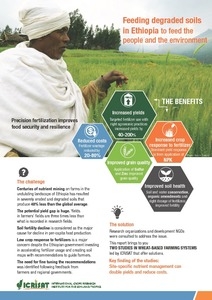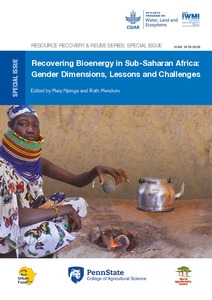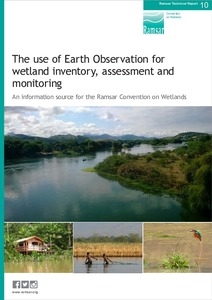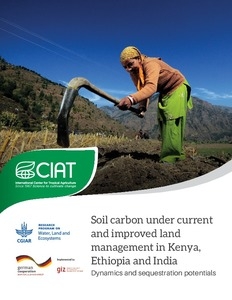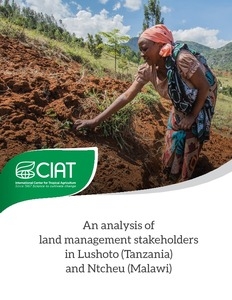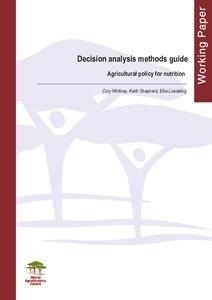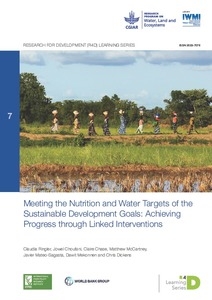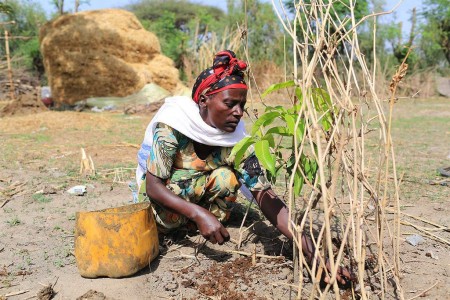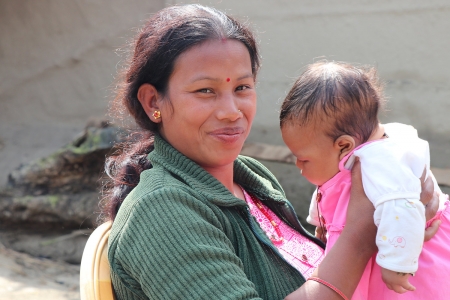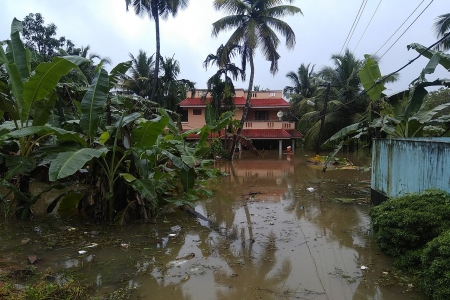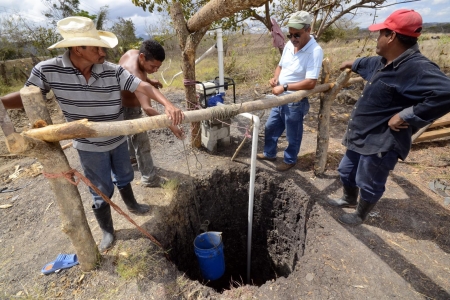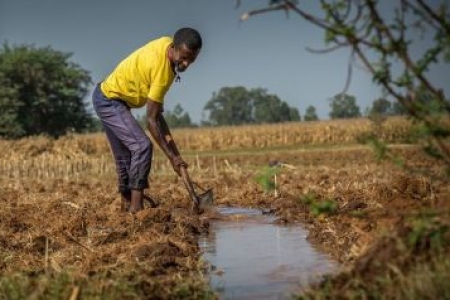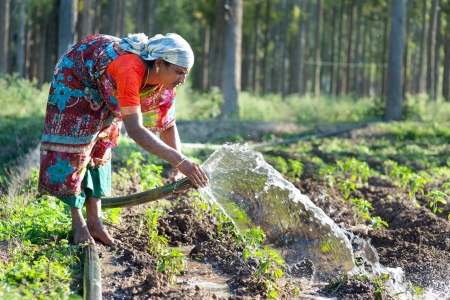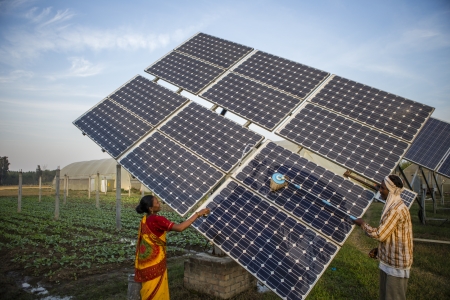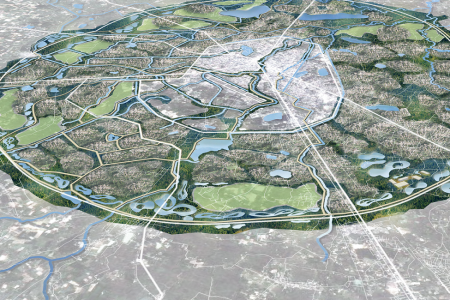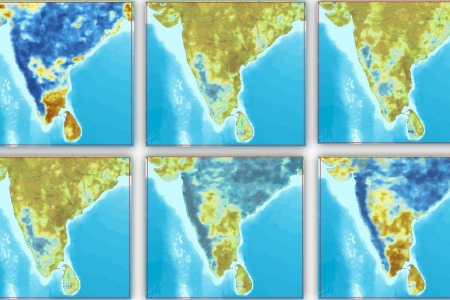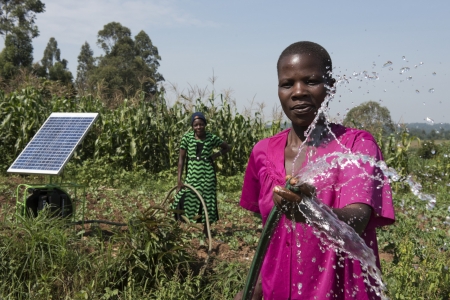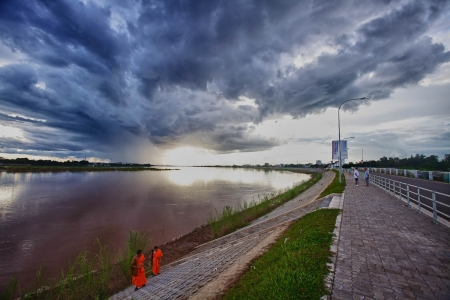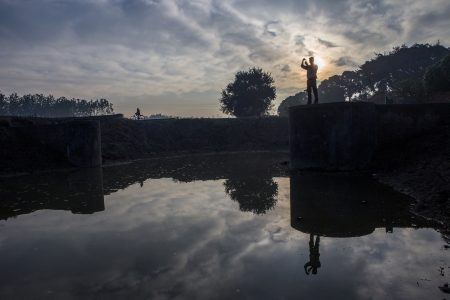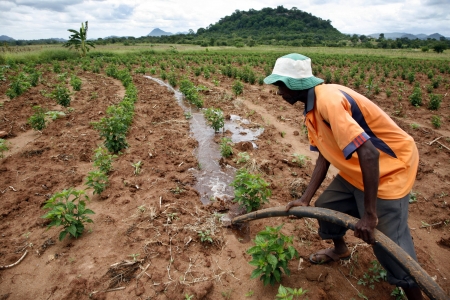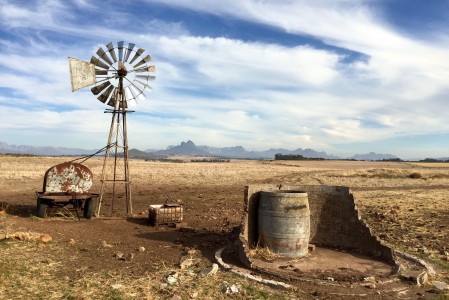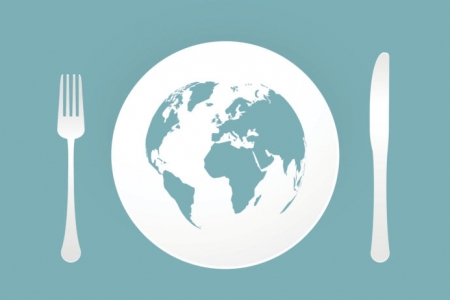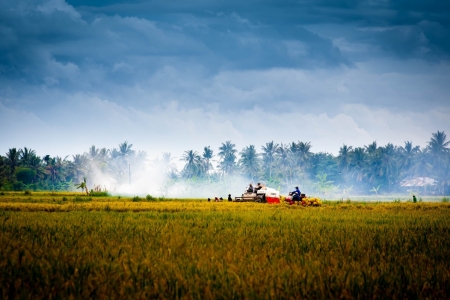The WLE 2018 Annual Report > Food availability

Ethiopian floodwaters captured for dryland farmers – and the approach is scaling up
The regional government of Afar state, Ethiopia, has adopted an innovative approach for turning potentially destructive floodwaters into a source of irrigation in the Ethiopian drylands.
The practice, developed by the CGIAR Research Program on Water, Land and Ecosystems (WLE) and the International Crops Research Institute for the Semi-Arid Tropics (ICRISAT), takes advantage of interconnected weirs – small dams – that capture and distribute water to revive grazing lands and boost crop productivity by up to 500%. And the approach has been integrated into a large, proposed World Bank project.
About 60% of Ethiopia’s land is dry lowland. Home to pastoralist communities, these areas experience alternating droughts and floods, making them inhospitable to crops or grazing. In recent years, extreme floods have affected hundreds of thousands of people in sub-Saharan Africa – many of them pastoral communities. In 2017, dams and rivers in Kenya overflowed, submerging crops, forcing over 300,000 people to flee, and killing 186. In 2019, floods were the major cause of displacement in Mozambique, Malawi and Zimbabwe.
In order to turn this seasonal flooding into an advantage, and restore degraded landscapes, GIZ (Gesellschaft fur Internationale Zusammenarbeit) has invested in a system of 50- to 300-m concrete or stone barriers (water-spreading weirs) in a cascading system in Chifra district since 2015. As the weirs redirect the floodwaters, water and nutrients are deposited across larger areas.
Recognizing the potential to grow forages and dryland crops on this suddenly nutrient-rich and temporarily moist soil, ICRISAT was charged with assessing how best to cultivate and manage this newly arable land. Creating GIS maps of water and nutrient deposits, the scientists developed recommendations on growing schedules and what forages and crops to grow where.
Such interventions rarely bring major impacts for agriculture. But in Afar, crop and forage yields increased abundantly over just three years, despite minimal fertilizer inputs – all while reducing the risk of water-related disasters.
The local community used these crops for domestic consumption and livestock fodder. And they distributed fodder to surrounding pastoralists, reducing local conflict. The project also reduced the amount of sedimentation entering local water sources.
The regional government is looking at expanding the approach to Yallo and Awra districts. And satellite data is currently being used to determine what locations would be appropriate for scaling up the project to other areas of sub-Saharan Africa.
Agricultural challengesare meetingtheir matchWLE 2018-19 Research Highlights
Finding the right solutions puts sustainable agriculture within reach
Sustainable agriculture faces a constellation of ever-shifting challenges. Our world’s population grows toward ten billion, but there is now indisputable evidence of multiple serious social and environmental impacts caused by current agricultural and food systems. We are fast approaching our limits.
Play the Sustainable Agriculture Match GameClick two cards. If the pictures match, the WLE solution will pop up! If not, try again with two more cards
Planetary boundaries
Food systems are a major driver of the unsustainable use of the planet’s increasingly fragile ecosystems. Water, land, forests and the biodiversity are precious, yet finite, natural resources. Current trends show that we are pushing the limits of what Earth can handle. How can we transform agriculture so that it's no longer part of this problem, but part of the solution?
Ann Tutwiler (CGIAR Research Program on Water, Land and Ecosystems (WLE))Board Chair
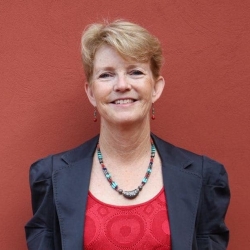
WLE is establishing a commission to convene global experts on sustainable intensification of agriculture. These experts will bring together years of research by WLE, our CGIAR partners and other science institutions to synthesize the best policies, economic incentives, tools, technologies and practices as well as lay out a roadmap for a sustainable and equitable food future.
Step Aston (One Acre Fund)Director - Agriculture Research
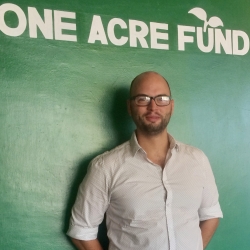
Access to reliable, large-scale, low-cost soil data is an important part of our efforts to develop more locally tailored soil fertility management recommendations and monitor the long-term impacts of our programs on soil health. To date, our soil lab has processed 50,000 soil samples, deriving insights to inform program strategy and decision-making in six countries. This effort would have been cost-prohibitive were it not for the technological breakthroughs and support delivered by the soil-plant diagnostic laboratory.
Food availability
Population growth, demographic shifts, dietary change, climate change and environmental decline challenge everything we know about how to grow and share food. Yet, food production must increase – some estimates say by 50 percent globally, and by almost 100 percent in Africa and Southeast Asia by 2050. But it’s not only about increased production. Better, healthier and more nutritious food is needed too.
Diego Senoner (Indo-German Energy Program)Technical expert

A well-designed KUSUM (Indian solar pump and grid-connected power plant scheme) policy for solar-powered irrigation is important for India to secure sustainable development of agriculture, maintain food security and safeguard groundwater during times of changing climatic conditions.
Marcela Quintero (International Center for Tropical Agriculture (CIAT))Agroecosystems and sustainable landscapes research area director
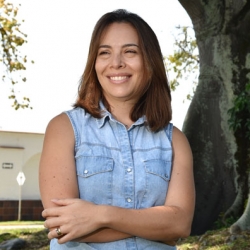
This data platform for improving water management demonstrates the potential that alliances between research centers and development agencies have to generate products that provide concrete solutions to real problems in agriculture. Likewise, these partnerships allow technical and scientific products to reach end users faster.
Equality of opportunity
In this era of planetary degradation, the world’s poorest and most marginalized often bear the brunt of the burden, losing livelihoods and opportunities. This can drive conflict and migration. With men increasingly leaving rural areas, women are playing a greater role in agriculture, but are still often marginalized and lack access to decision making and resources. At the same time, the sector offers fewer viable jobs to youth. Solutions are only sustainable if they are also equitable.
Abdullaeva Uguloi (Water user association of Obchakoron District, Halivad Jamoat, Tatjikistan)Head of WUA
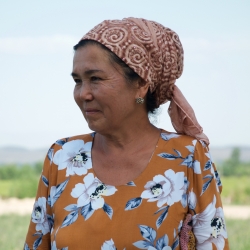
All water user associations should be headed by women. There is so much work, especially at the beginning, but you have to balance so many tasks, and you cannot give up. Women are more likely to overcome barriers. You have to be happy to always be working. Women are much better at this than men.
Miriam Otoo (International Water Management Institute (IWMI))Research group leader for resource recovery and reuse
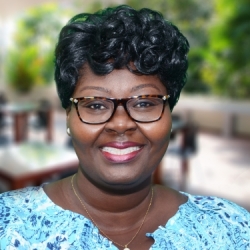
The business of safe recovery of water, nutrients and energy from domestic and agro-industrial waste offers significant opportunities to generate economic and social benefits to women and unemployed youth, especially in developing countries. These entrepreneurs, however, face high market entry barriers due to a lack of social networks, specialist skills and capital. It is therefore important to identify appropriate business training for youth or women entrepreneurs, tailored to their specific needs and capacity gaps under each unique geographical context.
2018 Publications highlights
WLE in the news
Thrive Blog Highlights
WLE is grateful for the support of CGIAR Trust Fund Contributors, including direct support from
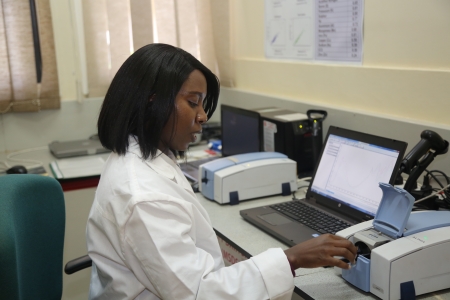
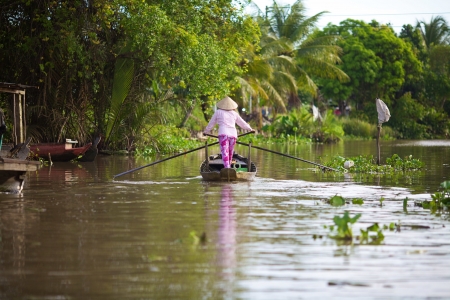
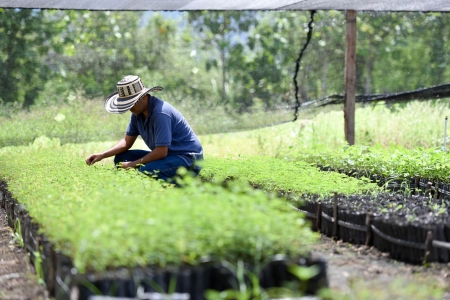
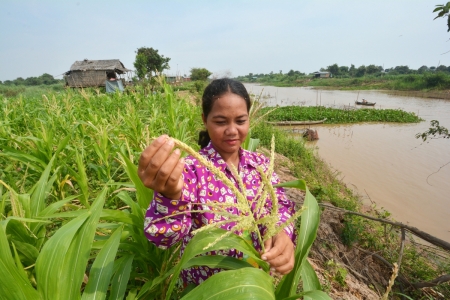
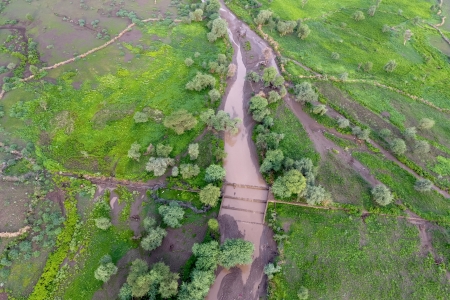
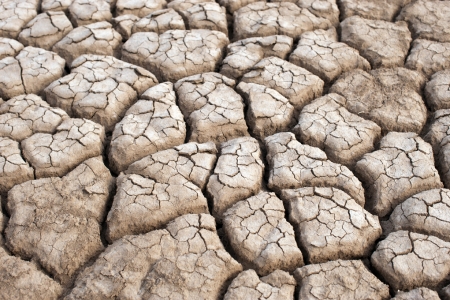
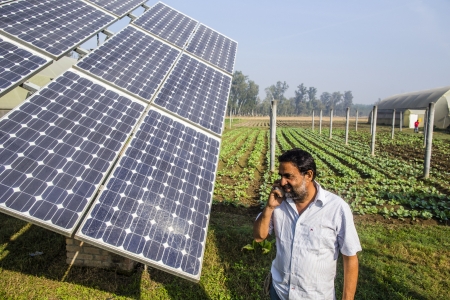
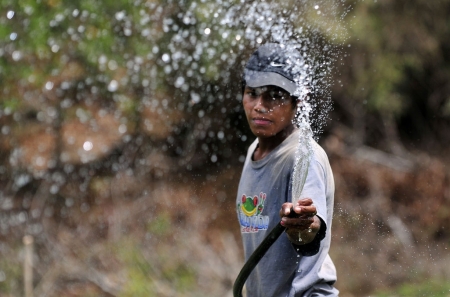
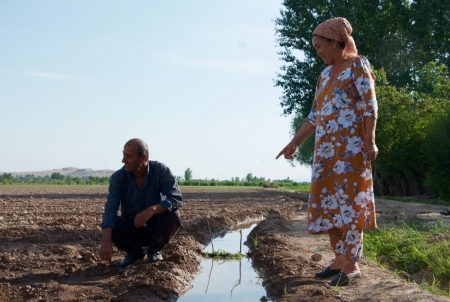
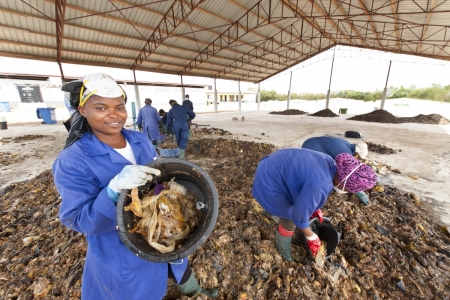
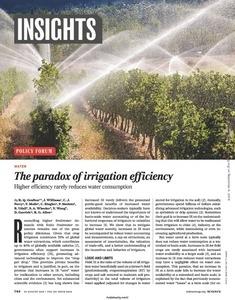
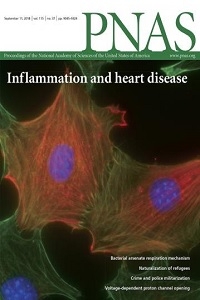
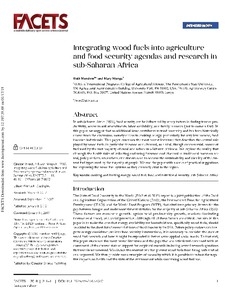
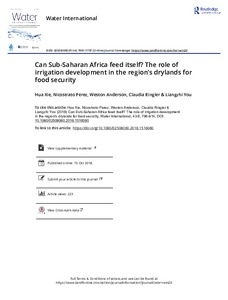
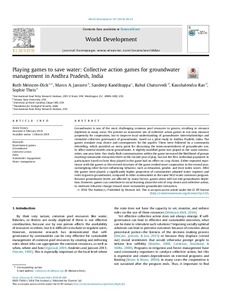
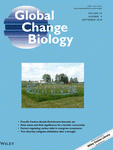

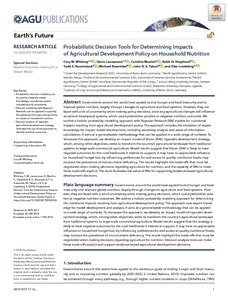
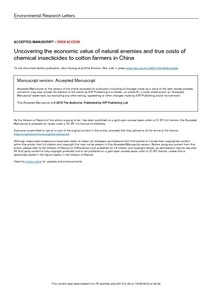
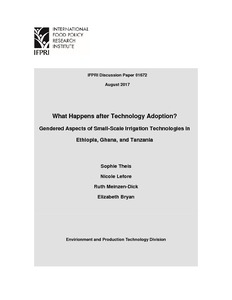
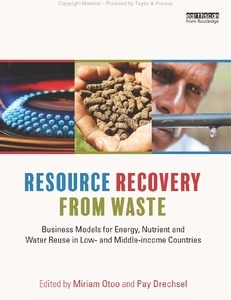
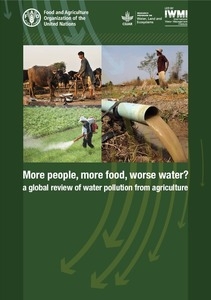
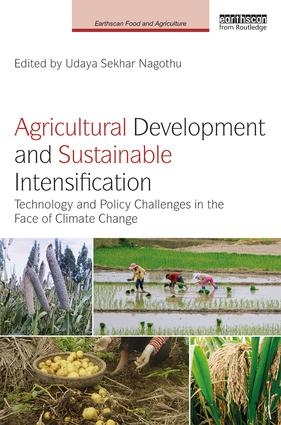
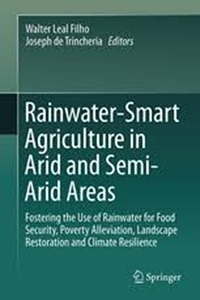
.pdf_/index.jpg?itok=1PqCyZYF)
